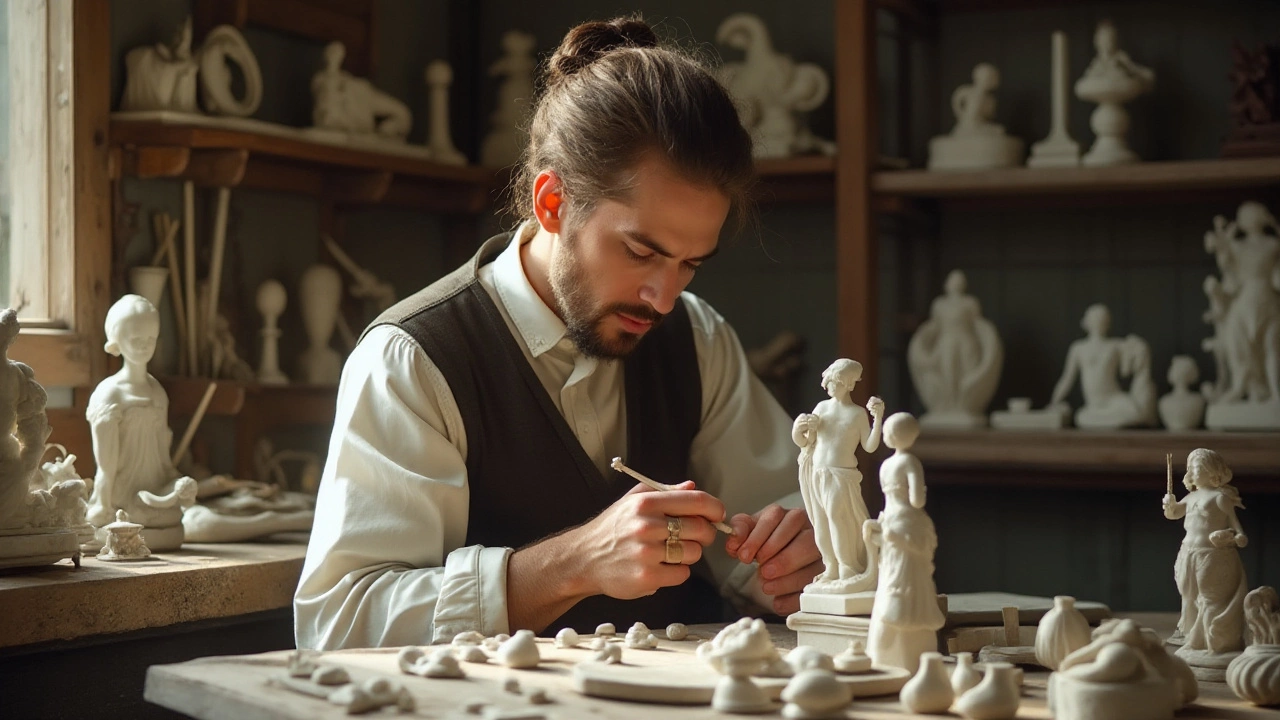Small Sculptures: Quick Ideas and Affordable Tips for Beginners
If you’ve ever wanted to turn a scrap of clay or a piece of wood into something that you can hold, small sculptures are the perfect place to start. They need less space, cost less, and let you see results fast. Below you’ll find a handful of practical ideas, the cheapest materials you can buy, and step‑by‑step pointers that work for anyone with a bit of curiosity.
Start Simple: Projects You Can Finish in One Sitting
Begin with shapes that don’t demand complex tools. A basic ball, a twisted tube, or a mini animal silhouette can be molded with just your hands and a spoon. Use air‑dry clay – it’s cheap, hardens in a day, and you don’t need a kiln. Roll the clay into a rope, coil it, and press the ends together for a smooth sphere. If you prefer something sturdier, grab a piece of cardboard, cut a template, and layer plaster strips over it. The result feels like a tiny statue without the mess of heavy stone.
Budget‑Friendly Materials That Still Look Great
Don’t let price stop you. Recycled items are gold mines: bottle caps become heads, old wooden spoons turn into limbs, and melted plastic beads can be fused into decorative beads. For a glossy finish, spray a light coat of clear nail polish – it adds shine and protects the surface. If you like texture, mix sand into acrylic paint; it gives a gritty, museum‑like feel without breaking the bank.
When you’re ready to step up a notch, try papier‑mâché over a wire armature. Wire is cheap at any craft store and provides a sturdy skeleton for larger forms. Layer strips of newspaper dipped in a glue‑water mix, let it dry, then sand it smooth. Paint with acrylics, and you’ve got a lightweight sculpture that can sit on a shelf or be displayed in a window.
One common mistake is over‑working the material. With air‑dry clay, stop shaping once the surface feels firm; otherwise you’ll end up with a soft, wobbling piece. With plaster, work quickly because it sets fast – have your design sketched out beforehand so you aren’t scrambling mid‑mix.
Another tip: keep a small toolkit handy. A utility knife, sandpaper (fine grit), and a set of toothpicks are all you need for detailing. Toothpicks are perfect for carving tiny lines, drilling tiny holes, or smoothing rough edges.
Once your sculpture is dry, consider a simple sealant. A spray of matte varnish protects against dust and gives a professional look without adding shine that could distract from the form.
Small sculptures are also great for gifting. A customized mini bust of a pet or a whimsical abstract form makes a personal present that feels handcrafted. Pack it in a small box with a handmade tag, and you’ve turned a hobby into a thoughtful gesture.
Ready to start? Pick a material you already have at home, sketch a quick design, and set a 30‑minute timer. You’ll be surprised how much you can create when you focus on one simple idea. Remember, the goal isn’t perfection – it’s to enjoy the process and watch a small idea turn into a tangible object.

28 Jan 2025
Small sculptures, often referred to as miniature sculptures, are art pieces that captivate collectors and artists alike through their intricate detail and charm. Subtle yet splendid, these sculptures cover a range of materials and techniques, offering a peek into the history and utility of this art form. From ancient artifacts to contemporary masterpieces, miniature sculptures continue to inspire creativity and innovation in the realm of art. Discover the secrets and stories behind these pocket-sized wonders.
Continue reading...
